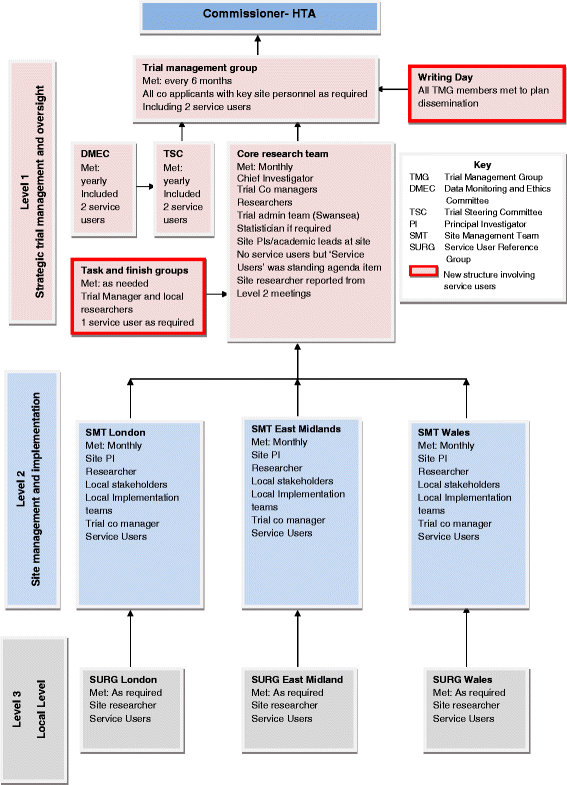Involving older people in a multi-centre randomised trial of a complex intervention in pre-hospital emergency care: implementation of a collaborative model
- PMID: 26156174
- PMCID: PMC4496939
- DOI: 10.1186/s13063-015-0821-z
Involving older people in a multi-centre randomised trial of a complex intervention in pre-hospital emergency care: implementation of a collaborative model
Abstract
Background: Health services research is expected to involve service users as active partners in the research process, but few examples report how this has been achieved in practice in trials. We implemented a model to involve service users in a multi-centre randomised controlled trial in pre-hospital emergency care. We used the generic Standard Operating Procedure (SOP) from our Clinical Trials Unit (CTU) as the basis for creating a model to fit the context and population of the SAFER 2 trial.
Methods: In our model, we planned to involve service users at all stages in the trial through decision-making forums at 3 levels: 1) strategic; 2) site (e.g. Wales; London; East Midlands); 3) local. We linked with charities and community groups to recruit people with experience of our study population. We collected notes of meetings alongside other documentary evidence such as attendance records and study documentation to track how we implemented our model.
Results: We involved service users at strategic, site and local level. We also added additional strategic level forums (Task and Finish Groups and Writing Days) where we included service users. Service user involvement varied in frequency and type across meetings, research stages and locations but stabilised and increased as the trial progressed.
Conclusion: Involving service users in the SAFER 2 trial showed how it is feasible and achievable for patients, carers and potential patients sharing the demographic characteristics of our study population to collaborate in a multi-centre trial at the level which suited their health, location, skills and expertise. A standard model of involvement can be tailored by adopting a flexible approach to take account of the context and complexities of a multi-site trial.
Trial registration: Current Controlled Trials ISRCTN60481756. Registered: 13 March 2009.
Figures
References
-
- Staley K. Exploring impact: public involvement in NHS, public health and social care research. National Institute for Health Research; 2009
-
- Department of Health. Choosing health: making healthy choices easier. 2004. http://webarchive.nationalarchives.gov.uk/+/dh.gov.uk/en/publicationsand.... Accessed 23 February 2015.
-
- Department of Health. Our health, our care, our say. White paper 2006. https://www.gov.uk/government/uploads/system/uploads/attachment_data/fil.... Accessed 15 April 2014.
Publication types
MeSH terms
Associated data
Grants and funding
LinkOut - more resources
Full Text Sources
Other Literature Sources
Medical


